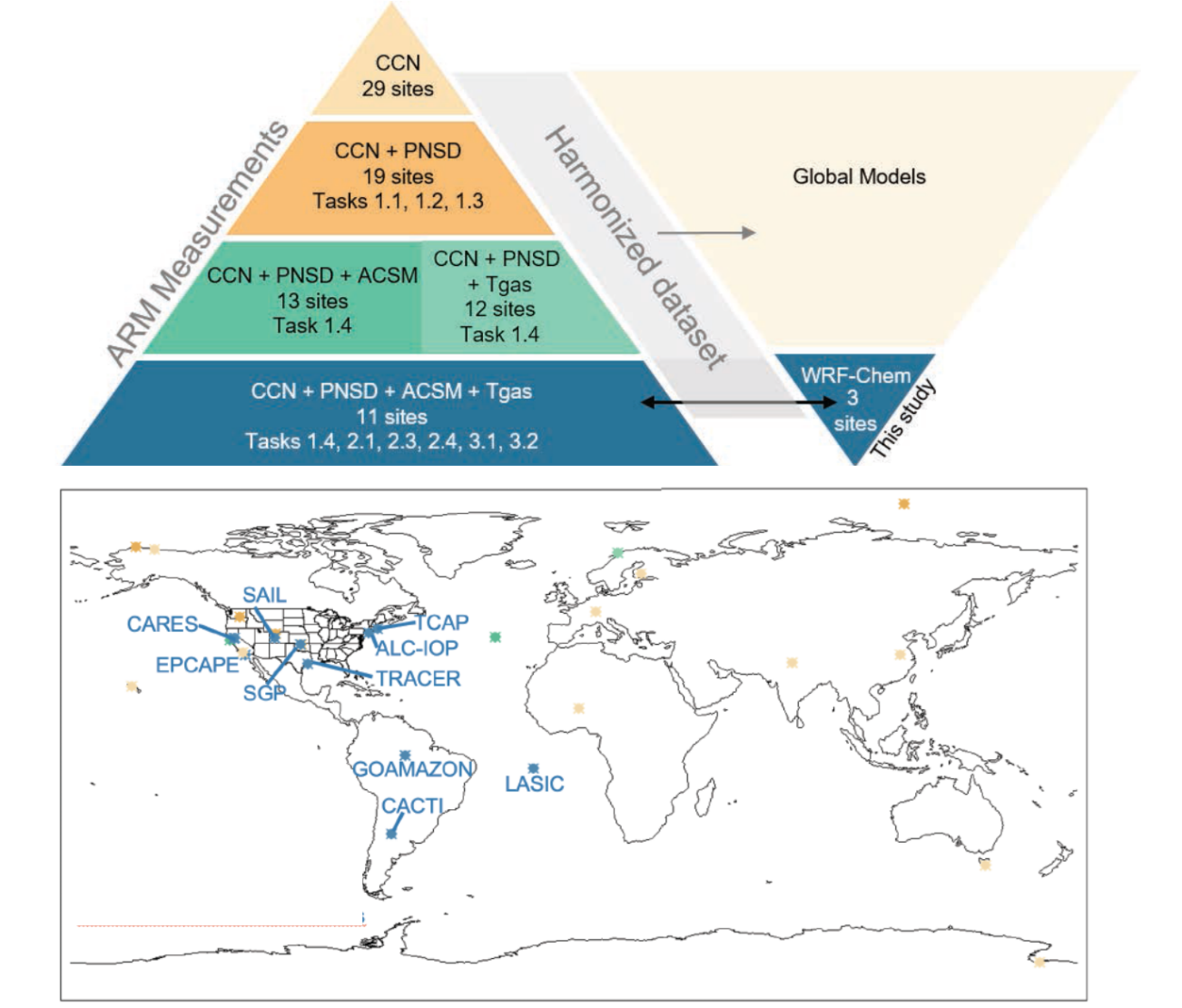
- Ref: DE-SC0022886
- Funding agency: US Department of Energy
- Realization: 01/08/2022 – 31/07/2025
- PI: Gannet Hallar (University of Utah)
- Co-PIs: Gloria Titos (University of Granada), Elisabeth Andrews (University of Colorado, Boulder), Fangqun Yu (State University of New York at Albany, SUNY)
- Collaborator: Juan Andrés Casquero Vera (University of Granada)
- https://asr.science.energy.gov/projects/16117
Abstract
Aerosol nucleation (formation of aerosol particles directly from gases) is an important atmospheric process that can impact cloud formation, but the contribution of aerosols formed via nucleation to overall cloud condensation nuclei (CCN) concentration is still poorly understood. Numerous modeling studies suggest that aerosol nucleation can influence the number of the global CCN, however direct measurements demonstrating a link between new particle formation (NPF) and CCN concentration are rare, and most are limited to case studies.
DOE ARM data (https://adc.arm.gov/discovery/#/), with simultaneous measurements of particle number size distributions (useful for identification of NPF events, formation and growth rates), CCN, aerosol chemical composition, and other relevant variables provide a unique and rich dataset to address the important challenges related to NPF and CCN. The main objective of this project is to use ARM data to understand the NPF process and its impact on CCN in different conditions (e.g., environment changes due to site locations and temporal changes at the sites). This will be done through a combination of comprehensive data analysis and model simulations using the WRF-Chem model (Weather Research and Forecasting model coupled with Chemistry) with explicit size-resolved particle microphysics. The scientific questions we propose to address are:
- What is the contribution of NPF to CCN?
- What methods perform best for identifying the contribution of NPF to CCN?
- What are the spatial, temporal, and environmental differences driving NPF contributions to CCN?
- Can WRF-Chem simulate and further explain the NPF and CCN observations on a regional scale?
- Can discrepancies between WRF-Chem and observations be used to improve modeling of relevant processes (e.g., nucleation schemes)?
We propose to develop a harmonized data set of DOE ARM (Atmospheric Radiation Measurement) observations of CCN and other relevant quantities (size distribution, aerosol chemistry, trace gases) to address these questions and serve as a resource to the wider modeling community.